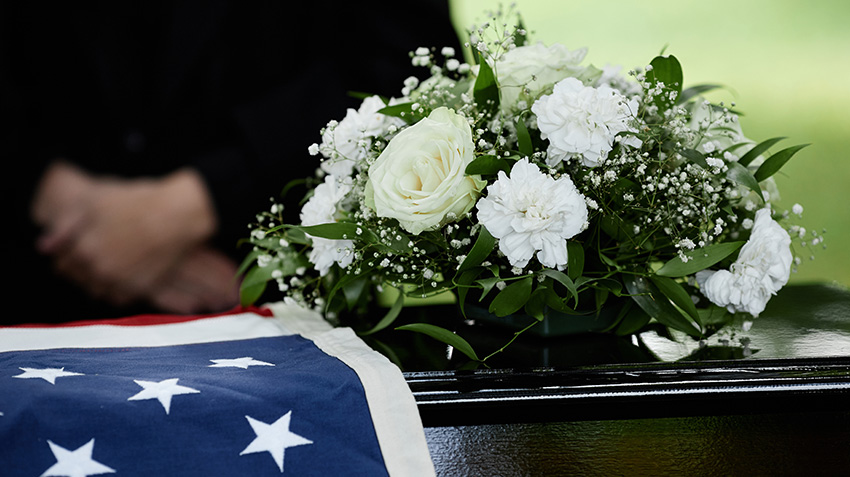
Funeral traditions are deeply rooted in nearly every culture, providing comfort and structure during one of life’s most challenging times: the loss of a loved one.
These customs help honor the deceased, bring solace to grieving families, and create a space for reflection and remembrance. Across the United States, funeral traditions are as diverse as the people who call this country home, reflecting a tapestry of cultural, religious, and regional influences.
With approximately 2.4 million funerals held annually in the U.S., these rituals play a vital role in helping families navigate grief while celebrating the lives of those who have passed. This blog post explores the rich diversity of funeral traditions in America, highlighting their importance and evolution over time.
The role of funerals in American society
Funerals serve as a cornerstone in the grieving process, offering a way for families and communities to say goodbye while finding collective solace. They are more than just ceremonies; they are profound moments that bring people together to share memories, emotions, and mutual support.
For many, funeral traditions in America are an essential step toward healing. These rituals help provide closure, allowing mourners to honor their loved ones while finding strength in shared experiences. Funerals also serve a social function, fostering connections between extended families and friends, sometimes reuniting people who haven’t seen each other in years.
The emotional importance of these gatherings cannot be overstated. Through eulogies, prayers, and moments of silence, families are given a structured way to celebrate the deceased’s life while confronting the reality of their passing.
Traditional Funeral Practices in the U.S.
Here are the typical funeral practices in the United States:
1. Viewing and Wake
One of the most common elements of funeral traditions in America is the wake or viewing, a gathering where friends and family can pay their respects to the deceased. This is often held in a funeral home, private residence, or church. Open-casket viewings allow mourners to see the deceased one last time, offering a sense of closure, while closed-casket viewings are more private and respectful of personal or cultural preferences.
These gatherings create a supportive environment, enabling loved ones to share stories and find comfort in each other’s presence.
2. Funeral Service
A traditional funeral service often follows the wake. These services can be religious or secular, depending on the family’s beliefs and the deceased’s wishes. They typically include prayers, hymns, eulogies, and sometimes a message or sermon from a clergy member or officiant. The structure of these services provides a comforting routine during a very emotional time.
For religious funerals, the officiant plays a central role in guiding the service, offering spiritual support and words of encouragement. Non-religious services may focus more on personal reflections and celebrating the deceased’s life.
A professional funeral service provider can help make planning the funeral service easier.
3. Burial or Cremation
After the funeral service, families often choose between burial and cremation, both of which have distinct rituals and traditions. Burial, a long-standing tradition in America, often includes the placement of the casket in a cemetery plot with a headstone or marker. Graveside ceremonies may follow, where loved ones gather for final prayers or words of remembrance.
Cremation has become increasingly popular, reflecting a cultural shift toward simplicity and cost-effectiveness. Families may scatter ashes in meaningful locations, keep them in urns, or incorporate them into memorial keepsakes.
4. Graveside Service
Graveside services, held at the burial site, provide an intimate setting for final goodbyes. These ceremonies often include short prayers, blessings, or reflections and may feature the symbolic lowering of the casket or scattering of earth over the grave. The setting offers a serene backdrop for mourning and closure.
Religious Influences on Funeral Traditions
Religion plays a significant role in shaping funeral traditions, influencing everything from rituals to the order of ceremonies. Each faith brings its unique customs, offering comfort through familiar practices.
1. Christian Funerals
Christian funerals are among the most common in the U.S. They typically include scripture readings, prayers, hymns, and eulogies. Depending on the denomination, there may also be rituals like the Eucharist or blessings. The emphasis is often on celebrating the deceased’s life while finding hope in eternal life.
2. Jewish Funerals
Jewish funeral traditions focus on simplicity and respect for the deceased. Quick burial, often within 24 hours, is a major part of the Jewish faith. Family and friends observe Shiva, a seven-day mourning period, during which they gather to offer condolences and recite Kaddish prayers.
3. Muslim Funerals
In Islamic traditions, funerals emphasize purity and respect. The deceased’s body is washed, shrouded, and buried as soon as possible. Salat al-Janazah, a special prayer for the deceased, is performed before the burial. Muslim funerals avoid embalming and cremation, reflecting religious beliefs about the sanctity of the body.
4. Other Religious Traditions
Other religious practices, such as Buddhist meditation ceremonies or Hindu cremation rites, further enrich the diversity of funeral traditions in America. These customs reflect a deep connection between faith and the grieving process, offering families spiritual guidance during difficult times.
Modern Funeral Traditions and Personalization
In recent years, funeral traditions have evolved to emphasize personalization and celebration of life. Families are increasingly opting for unique ways to honor their loved ones, moving away from strictly formal ceremonies.
Themed services, memory tables, and video tributes are just some of the creative ways people commemorate the deceased. Green funerals, which focus on eco-friendly practices like biodegradable caskets or natural burials, have also gained popularity, reflecting a growing awareness of environmental issues.
These modern approaches allow families to create meaningful and memorable experiences that reflect the individuality of their loved ones.
Regional and Cultural Variations
Funeral traditions in America also vary by region and cultural heritage. For example, Southern funerals often include large family gatherings with food and hospitality, while Midwestern ceremonies may be more understated and community-focused. In the West, informal celebrations of life have become more common, blending traditional rituals with modern personalization.
Cultural influences also shape funeral practices. African American funerals, for instance, often feature vibrant music and emotional tributes, while Hispanic traditions may include novenas or other religious prayers. Native American ceremonies may incorporate spiritual rituals, storytelling, and songs to honor the deceased.
These variations highlight the diversity of America’s cultural fabric and how communities honor their dead.
The Importance of Funeral Etiquette
Funeral etiquette is a vital aspect of honoring the deceased and supporting grieving families. Attendees should dress conservatively, typically in dark or neutral colors, to show respect. Offering heartfelt condolences, whether in person, through a card, or online, can provide comfort to those in mourning.
Being mindful of cultural and religious practices is equally important. Respect for traditions, whether through silent reflection or participating in rituals, demonstrates solidarity and care during a family’s time of need.
Funeral Traditions in America are Diverse
Funeral traditions offer comfort, structure, and a way to honor loved ones during life’s most challenging moments. These rituals, whether rooted in longstanding traditions or modern personal touches, help families navigate the grieving process while celebrating the unique lives of those they’ve lost. By understanding and respecting these customs, we can provide meaningful support to grieving families, ensuring their loved ones are remembered in ways that bring solace and connection. These traditions remain an essential part of healing and remembrance in American society.
Frequently Asked Questions
Below are commonly asked questions to consider:
1. What are some eco-friendly funeral options in America?
Eco-friendly funerals, also known as green funerals, focus on reducing environmental impact. Options include biodegradable caskets, natural burials, and tree-planting memorials. These alternatives align with growing environmental awareness and provide sustainable ways to honor loved ones.
2. Are online memorials becoming a common part of funeral traditions in America?
Yes, online memorials are increasingly popular. They allow families to create digital spaces where friends and relatives can share memories, photos, and condolences. This modern addition complements traditional funeral services by extending the remembrance process.
3. How can families personalize a funeral service?
Families can personalize a funeral by incorporating elements that reflect the deceased’s personality, such as favorite music, themed decor, or video tributes. Memory tables displaying cherished items and photos are also a meaningful touch.



